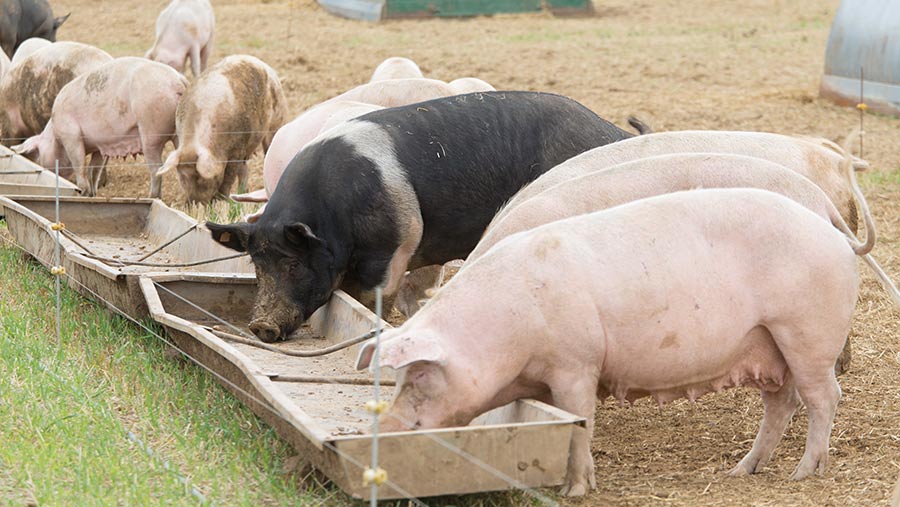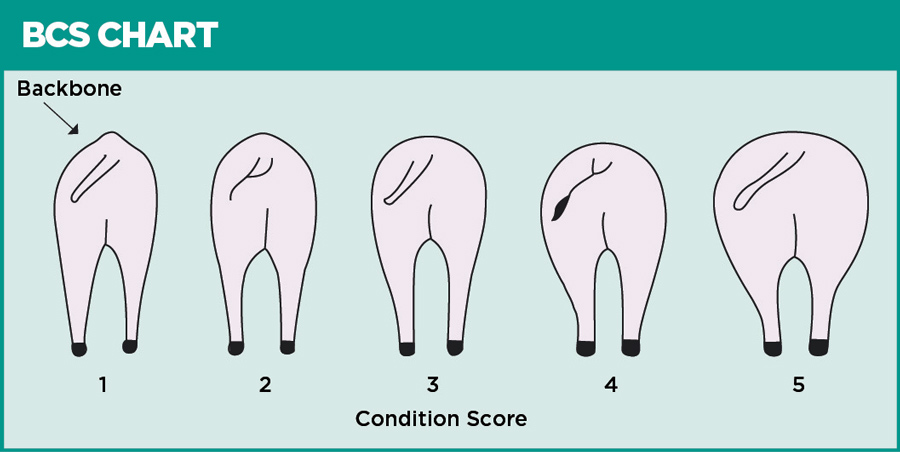A guide to feeding gilts and sows through a production cycle
 © Tim Scrivener
© Tim Scrivener Nutrition is key throughout a pig’s lifetime, and particularly important for the breeding females of the herd in order to achieve optimum piglet production and growth.
On a recent Farming Connect webinar, Andrew Marriage, commercial nutritionist at ForFarmers, and Sian Southwell, retail account manager at ForFarmers, shared some expert tips on feeding gilts and sows.
Energy requirements
Optimal feeding of sows and gilts is necessary to support:
- Maintenance
- Maternal recovery from recent body weight loss
- Implantation of embryos and placental development
- Maternal growth
- Foetal growth
- Mammary development
- Maternal energy reserves.
Gilts have additional nutritional requirements to ensure they achieve full development. Our guide to managing gilts up to service explains more on specific gilt rations.
High-Low-High diet
Sows feed requirements vary for their different life stages.
In larger commercial herds, there would typically be a gestation/dry sow diet for pregnant sows and a lactation diet for sows that are suckling. However, in a smaller system it might be easier to use one diet and instead pay more attention to the amounts being fed.
The recommended pattern for feeding a single diet would be a high-low-high regime. This means:
Weaning to service: High
- Feeding at this stage should be high to ad-lib
- Extra protein is needed for assisting the sow’s fertility to ensure successful service
- Restoring body condition at this stage is important
Three weeks after service: Low
- Feed can be reduced at this stage to a steady amount for most of the gestation
- It is important to maintain sow and foetal growth but not to let the sow get fat
End of gestation – about Day 90: High
- Increase feed to support rapid foetal growth at end of pregnancy
- Lactation and increasing piglet demand on sow needs to be met through increased feed.
Sow body condition is the main driver for adjusting sow feed. The ideal body condition score (BCS) is 3 – well-covered without prominent bones, but not too rounded or fat.

Ration components
Nutritional requirements will vary for sows during gestation and lactation, and for lactating gilts. The tables below, from AHDB Pork, give an overview of the key nutritional components:
Nutrient specifications for gestating sows
|
|
| Nutrients | Gestating sow requirement |
| Net energy (MJ/kg) | 9-10 |
| Crude protein (%) | 12-14 |
| Crude fibre (%) | 4-5.5 |
| Source: AHDB Pork | |
Nutrient specifications for lactating gilts and sows |
||
|
Nutrients |
Lactating gilt (parity 1 and 2) | Lactating sow (parity 2 and 3 onwards) |
| Net energy (MJ/kg) | 9.8-10.2 | 9.7-10 |
| Crude protein (%) | 18-19 | 16-17.5 |
| Crude fibre (%) | 3.5 minimum | 3.5 minimum |
| Source: AHDB Pork | ||
Daily feed requirements
Feed intake and requirements can be affected by many factors such as genetics, feeder space, palatability of the diet, health status and environment.
The table below gives a rough guideline to requirements.
Pig requirements according to production stage |
||
|
Pig type |
Basic daily requirement |
Additional requirements |
|
Dry sows and gilts |
2.5kg a day of sow and weaner meal |
Extra 1kg a day for one week before service and one week after service |
|
Lactating sows |
2.5-3kg a day of sow and weaner meal |
Gradual increase of 0.5kg a day pre-weaning to meet piglet appetite before weaning |
|
Source: ForFarmers/Farming Connect webinar |
||
Water requirements
Water is a key ingredient for all functions, such as adjusting body temperate, transporting nutrients to tissues, growth and milk production.
Breeding females in the herd have varying water requirements throughout the reproductive cycle:
Water requirements according to production stage |
|
|
Pig type |
Litres/animal/day required |
|
Gilts |
5-10 |
|
Gestating sows |
12-20 |
|
Lactating sows |
25-50+ |
|
Source: ForFarmers/Farming Connect webinar |
|
More nutritional advice for pig systems can be found in our 4-step guide to rations, which covers piglets, weaners, growers and finishers.

